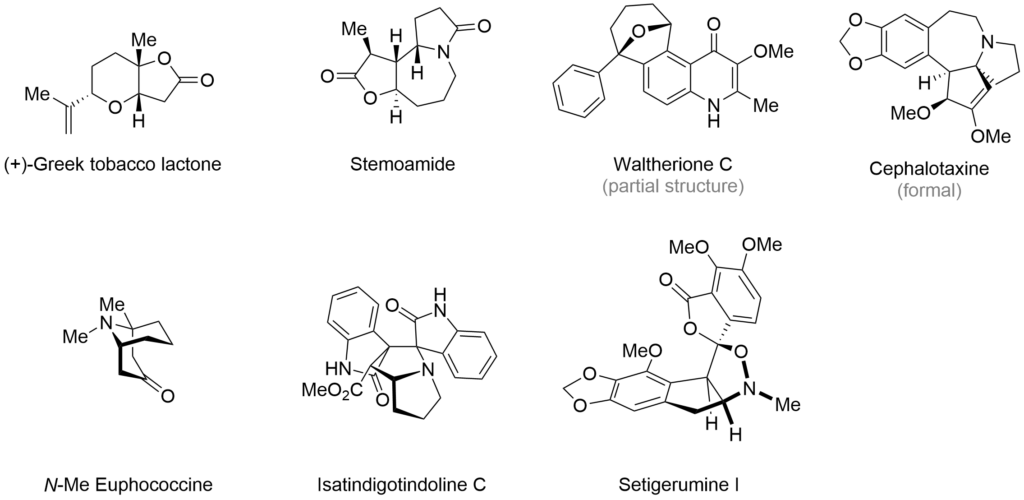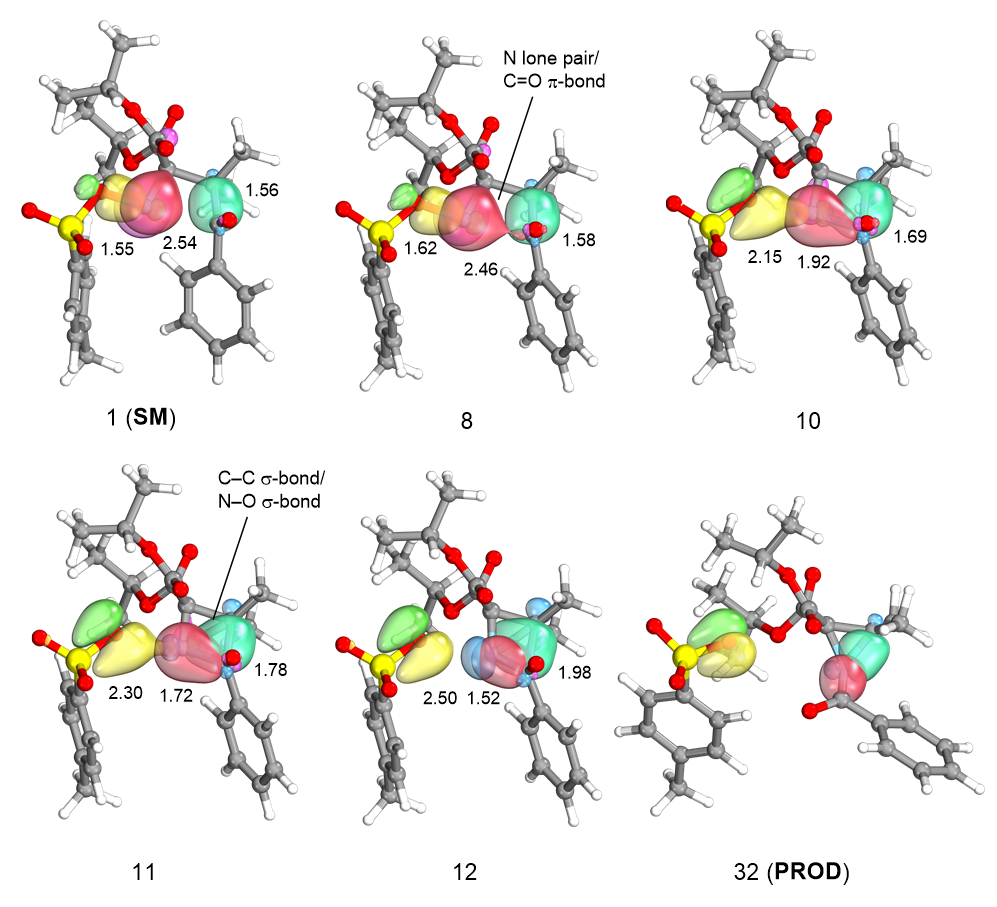The ETOS group operates at the interface between experimental and computer-assisted organic synthesis. Our work is largely driven by inspiration drawn from polycylic alkaloid natural products which are used as platforms for development of new synthetic methods and the study of mechanistically intriguing processes.
Organic Synthetic Chemistry
Organic synthetic reactions should be readily accessible to the entire scientific community, allowing people to easily make the molecules they need. This is why we are interested in the development of reliable bench-stable reagents, and spot-to-spot open-flask synthetic methods. To foster new synthetic ideas and to truly acid-test the limitations of current chemistry, we are pursuing the development of ideal syntheses for polycylic alkaloids. In particular, we are interested in the synthesis and biology of structurally unique and highly rare racemic alkaloids.
The overarching theme in all of our research efforts is the fundamental physical understanding of the chemical processes involved. With deeper understanding of underlying regio- and stereoselectivity elements comes greater control over the chemistry at hand. In the long run, we hope such an approach of combining synthesis with computational tools on a fundamental level will provide chemists with reliable tools for a-priori prediction even in the realm of dauntingly complex natural product syntheses.
Relevant publications:
- Serna, A. V.; Kürti, L.*, Siitonen, J. H.* “Total Synthesis of (±)-Setigerumine I: Biosynthetic Origins of the Elusive Racemic Papaveracaea Isoxazolidine Alkaloids”, ChemRXiv preprint, 2021.
- Siitonen, J. H.; Kattamuri, P. V.; Yousufuddin, M.; Kürti, L.* “Arylboronic Acid-Catalyzed C-Allylation of Unprotected Oximes: Total Synthesis of N-Me-Euphococcine”, Org. Lett. 2020, 22, 6, 2486 (DOI).
- Siitonen, J. H.*; Lira, S.; Youssufuddin, M.; Kürti, L.* “Total Synthesis of Isatindigotindoline C”, Org. Biomol. Chem. 2020, 18, 2051 (DOI). Featured in Org. Chem. Highlights: Alkaloid Synthesis

Computational and Theoretical Synthetic Chemistry
How can we mathematically represent organic synthesis and what insights does this give us? We are developing algorithms, data structures and mathematical representations, especially those based on graph theory, to provide new ways of looking at organic synthesis.
In addition, we are heavily involved in studying reaction mechanisms using computational methods. Main quantum-chemistry tools used are Gaussian, xTB, crest, ORCA, Molcas, NCIplot and IboView. For studying energy landscapes a breadth of tools, including NEB and GSM are used. In particular, we are focused on applying intrinsic bonding orbitals (IBOs) in combination with minimum energy pathway finding methods as tools to understand the inner workings of chemical reactions.
Relevant publications:
- Csókás, D.; Siitonen, J. H.; Pihko, P. M.*; Papai, I.* “Conformationally Locked Pyramidality Explains the Methylation Stereochemistry of trans-Fused Butyrolactones”, Org. Lett. 2020, 22, 12, 4597 (DOI).
- Cheng, Q.-Q.; Zhou, Z.; Jiang, H.; Siitonen, J. H.; Ess, D. H.*; Zhang X.; Kürti, L.* “Organocatalytic nitrogen-transfer to unactivated olefins via transient oxaziridines”, Nature Catalysis 2020, 3, 386. (DOI).

Chemistry Education
What are the key contributors to effective and inclusive chemistry education?
Outside of organic chemistry research one of our main efforts in chemistry education is aimed at helping and encouraging kids interested who are interested in science. We want to help kids who are interested in science get the support they need to become the next generation of scientist and engineers.
We am also interested in providing university level students with a comprehensive understanding of chemistry. Chemistry concepts should not be divided into separate categories such as physical, inorganic, organic or analytical, but rather they should be unified to form a coherent body of information. The same underlying physics, quantum mechanics and thermodynamics, governs all of chemistry.
As for learning theories and pedagogy, we are studying the effects of emotions on learning science. Oftentimes sciences are seen as cold and separate from emotions. However, emotions play a key role in science education and should be taken into account when planning, executing and evaluating truly inclusive higher education.
Research Powered by



